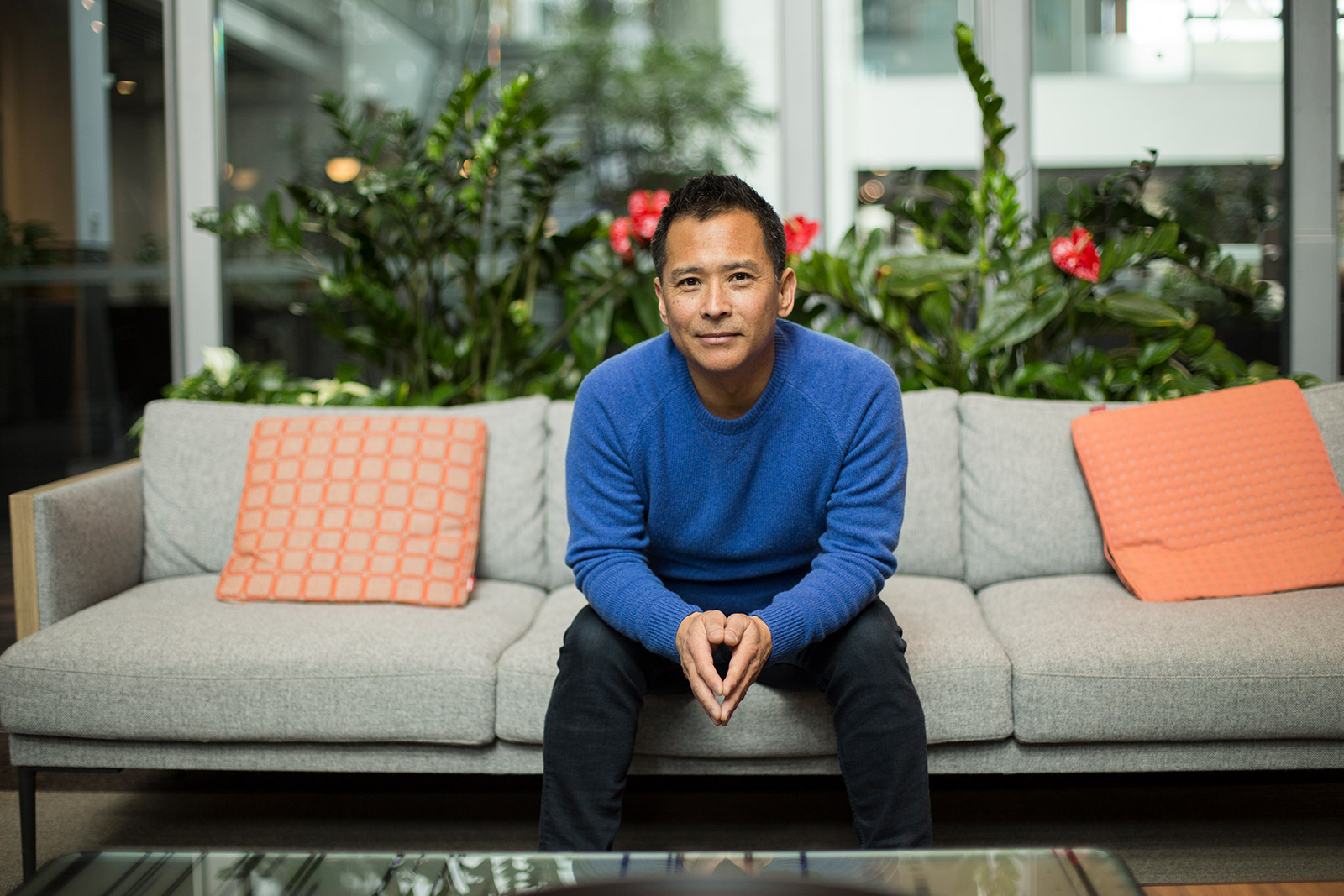
This past summer we sat down with the former Microsoft partner and design director, Steve Kaneko, to discuss the current and future impacts of artificial intelligence (AI) on the practice and product of architecture. We hope you enjoy this topical conversation as much as we did.
What does the future of AI in architecture and design look like to you?
It’s helpful to start by thinking about designing with AI in two different ways. The first is probably the most talked about, which is using it as a generative tool for complementing and accelerating the creative process of form-making. The second is that it will provide architects with the information and knowledge to design with AI; fact finding won’t be perfect (in the beginning), and it will require a good dose of critical thinking to verify that the results are accurate.
The other way to look at this is to understand that intelligence and perception will be hardwired into the things we design and build—they will be embedded in our products, buildings, and places (they already are). For example, when considering industrial design, products will be inherently intelligent and connected; they will be capable of understanding who you are, and your patterns of use in a given context so they may accurately predict your intentions, minimizing the effort you need to expend to achieve desired outcomes. I’d call this designing for AI.
Beginning immediately, we can assume that products, buildings, and places present analogous sets of design problems and opportunities. The personal computer will become obsolete; instead, connected sensor networks will function in the cloud, and our ability to use our bodies as input devices will make the physical world (planet earth) the actual and maybe final “personal computer.” If this is accurate, then we are all part of a massive environmental design problem that consists of digital and physical people, places, and things.
Architecture is further behind the AI curve than product design because the latter is closely aligned with user experience (UX) and software, which are the cultures driving AI. Architecture’s current disadvantage is that AI likely does not come up on a daily basis. Are architects and designers prepared and proactive enough to think about their roles in this future state? I believe they should get on board. Now.
As Augmented Reality (AR) and Virtual Reality (VR) evolve, how do you see the physical world evolving?
It’s the trillion dollar question that Apple, Meta, Tesla, Microsoft, and most tech companies are experimenting with. I’m of the school that the future is what we make it, so as makers, the answer is in our hands. One reliable fact about the world of AR is that we can absolutely imagine a future where we will be able to see things digitally in our three dimensional spaces. This is already common place, whether we know it or not. We have heads up displays (HUDs) in cars, we can virtually try on glasses, and we can see how furniture fits in our spaces without having to physically purchase it. Displays will be as pervasive as contact lenses, and VR and AR glasses will eventually be smaller and more affordable—and yes, cool.
There are so many things we rely on in the physical world that wouldn’t be necessary if we could instead rely on a digital complement to. Here’s a very simple example of how a product designer might make different decisions. Consider any product that is made of a thousand components, such as a printer or any machine; they all have a brain (processor), a face (display), and an interface (buttons) that help you understand what it needs to deliver your desired experience. Each of these components, particularly the display and input technologies, could comprise 50%+ of the overall cost to produce the product. Now, eliminate the display, buttons, and maybe even the processor in lieu of a digital overlay (via headset, projection, cloud computation), and the use of a reliable voice or eye gaze control, and the product can be sold at a lower cost due to the lower cost of components, while simultaneously providing obvious product and feature upgrades. So, if this mixed-reality state can be reliably embraced by consumers, then there will be some interesting engineering and design tradeoffs that can be made between the physical and digital worlds; they become peers that create solutions.
In the case of VR (fully immersive digital experiences), consider someone who is living in a 500-square foot space—they can put on a headset and be and work anywhere, including a virtual world, so the value of, and requirements for physical space changes. In addition to providing shelter from the elements and our basic needs, our physical environments will be able to see, hear, and understand who is in them, what they’re doing, and predict (with increasing accuracy) why they’re doing it, and then adapt accordingly. As Le Corbusier foresaw in his architectural principles, we will truly be creating machines for living that will be sensor rich, intelligent, perceptive, and hopefully tasteful, humanistic, and ethical.
Three dimensional digital products and places will be applications (apps), not unlike those we currently download from Apple or Google Play. But instead of a 2D app on our phones or PCs, we will be able to control services using virtual things that may, or may not, look and behave like the products and places we’re used to experiencing in the physical world. It will essentially be a three dimensional internet with places being no different than websites.
A big, broad, and fun question that I’m wrestling with is: what is good design in this new world of blended realities? I was trained to believe that form should follow function, and that the physical world is governed by the laws of physics. But in a hybrid world where these laws are no longer always relevant, then what? What is beautiful and right architecture in this world where structural engineers and builders are no longer required? Like it or not, these virtual worlds are being created by those fluent in game engines and movie industry special effects rather than formally educated architects or designers, so how does one critique the quality of a design or structure? Where do you start when there is no cost to build, no limitations on space, or no materials to touch? Is experiential continuity between worlds important?
Based on what you’ve said, I can imagine a world where we won’t need a headset to engage with virtual worlds, correct?
Correct. We already do this when we have video meetings, or play a multi-person game on a TV across time zones. Three decades at Microsoft has forced me to appreciate how machines see the world, and how they seem to understand who we are. In this spirit, designers would benefit from becoming comfortable with discerning and empathizing with how machines perceive and make sense of the world.
Consider the software and hardware worlds (atoms and bits), which are made of input and output technologies, and the operating system that creates the logic between the two. We need designers (humans) who can help us coexist with technology to ensure it works on our behalf. In order for this to be the case, the logic better be based on what we value as human beings, and the reality that businesses need to generate revenue. This future world is multi-modal and multi-dimensional—input and output will move quickly back and forth, self-informing. It’s a highly sensory multi-dimensional design problem. The future worlds of AR and VR will ultimately employ natural interfaces where we no longer need input devices—instead, our bodies serve this purpose.
Interface design is a profession made necessary because machines have not been smart enough to accurately predict our intentions—we are forced to speak machine in order to disambiguate our intentions to them. The promise of AI is that technology and machines are finally becoming smart enough to understand and speak the language of humans, making the interfaces of today no longer necessary. The goal is to eliminate the need for human interface; the entire world will operate as a machine, and architecture (physical, digital, and everything in between) will need to decide where and if it engages with this connected place some call the metaverse.
 Steve Kaneko, FIDSA is a seasoned product design executive and Fellow of the Industrial Designers Society of America. Since departing Microsoft in 2019, he has been an advisor at Kaneko Design Group, LLC, collaborating with corporate leaders to establish experience design systems, capabilities, and cultures crucial for leveraging design’s strategic role in our new technology era. More, having navigated the waves of computing from the PC to mixed-reality and AI, Steve’s background as an industrial designer has expanded to encompass a deep understanding of ergonomics, design research, branding, human interaction, and experience-design storytelling and orchestration. Steve lives in the Seattle, Washington area with his family.
Steve Kaneko, FIDSA is a seasoned product design executive and Fellow of the Industrial Designers Society of America. Since departing Microsoft in 2019, he has been an advisor at Kaneko Design Group, LLC, collaborating with corporate leaders to establish experience design systems, capabilities, and cultures crucial for leveraging design’s strategic role in our new technology era. More, having navigated the waves of computing from the PC to mixed-reality and AI, Steve’s background as an industrial designer has expanded to encompass a deep understanding of ergonomics, design research, branding, human interaction, and experience-design storytelling and orchestration. Steve lives in the Seattle, Washington area with his family.





